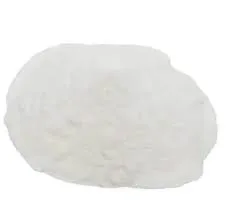
Oct . 13, 2024 02:41 Back to list
mhec-methhyl hydroxyethyl cellulose
Understanding Methyl Hydroxyethyl Cellulose Properties and Applications
Methyl Hydroxyethyl Cellulose (MHEC) is a non-ionic cellulose ether derived from natural cellulose
. It plays a crucial role in various industries due to its unique properties, making it an essential ingredient in many products. This article explores the characteristics, benefits, and applications of MHEC.Properties of MHEC
MHEC features a high degree of purity and excellent solubility in water, which contribute to its effectiveness in various applications. It is characterized by its ability to form a gel-like structure when mixed with water, which aids in thickening, stabilizing, and emulsifying formulations. The chemical structure of MHEC includes both methyl and hydroxyethyl groups, which enhance its performance, solubility, and versatility in different environments.
One significant property of MHEC is its viscosity. It can create solutions with a wide range of viscosities depending on the concentration and the molecular weight of the cellulose. This adaptability allows manufacturers to tailor products for specific needs, such as coatings, adhesives, and construction materials. Furthermore, MHEC displays good resistance to heat, making it suitable for high-temperature processes.
Benefits of MHEC
MHEC offers several advantages that make it a preferred choice in many applications. First and foremost, its thickening properties mean that it can be used to enhance the texture and consistency of products, leading to improved user experience. In personal care items, for instance, it helps create creams and lotions with the desired viscosity while providing stability during storage.
Another important benefit of MHEC is its emulsifying ability. It can help stabilize oil-in-water emulsions, which is critical in the formulation of cosmetics and food products. This property helps improve the appearance, shelf-life, and overall quality of the formulations.
mhec-methhyl hydroxyethyl cellulose

MHEC is also praised for its low toxicity and non-irritating nature, making it a safe choice for various applications, particularly in food, pharmaceuticals, and personal care. This safety profile has led to its widespread acceptance in sectors where consumer safety is paramount, such as cosmetics and food additives.
Applications of MHEC
MHEC finds its utility across various sectors. In the construction industry, it acts as a thickener in tile adhesives, joint compounds, and cement-based products, providing improved workability and adhesion. Its water retention properties are critical in ensuring that these materials remain workable during application.
In the personal care industry, MHEC is used in products such as shampoos, conditioners, and skin care formulations to provide smoothness and stability. Additionally, it is employed in pharmaceutical formulations as a binder and controlled-release agent in oral tablets.
In the food industry, MHEC serves as a food additive for thickening sauces, dressings, and dairy products, enhancing texture and mouthfeel without affecting taste.
Conclusion
Methyl Hydroxyethyl Cellulose is an indispensable ingredient across multiple industries due to its unique properties such as thickening, stabilizing, and emulsifying. Its safety, versatility, and effectiveness ensure its continued use in a wide range of applications from construction materials to personal care products. As research progresses, the full potential of MHEC is likely to expand, providing innovative solutions to meet the evolving needs of various industries.
-
The Widespread Application of Redispersible Powder in Construction and Building Materials
NewsMay.16,2025
-
The Widespread Application of Hpmc in the Detergent Industry
NewsMay.16,2025
-
The Main Applications of Hydroxyethyl Cellulose in Paints and Coatings
NewsMay.16,2025
-
Mortar Bonding Agent: the Key to Enhancing the Adhesion Between New and Old Mortar Layers and Between Mortar and Different Substrates
NewsMay.16,2025
-
HPMC: Application as a thickener and excipient
NewsMay.16,2025
-
Hec Cellulose Cellulose: Multi functional dispersants and high-efficiency thickeners
NewsMay.16,2025







